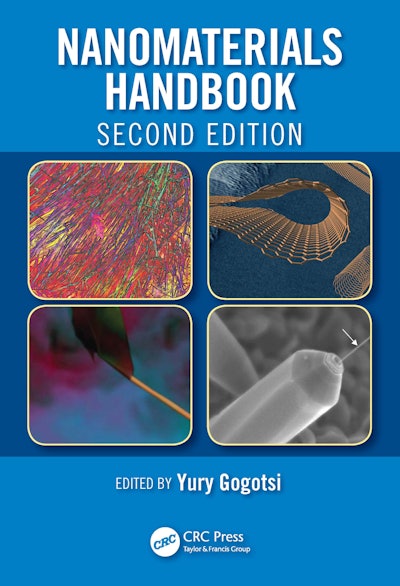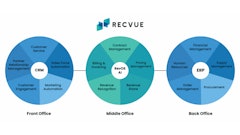
Consider nanomaterials. Yury Gogotsi literally wrote the book on nanomaterials; his Nanomaterials Handbook is now in its second edition (CRC Press, 2017). Gogotsi spends his days working with, and thinking about, these tiniest of materials known to industry, and his views of the potential for this transformative technology are as expansive as the particles are small.
“Nanomaterials and nanotechnologies are inevitably going to penetrate into every field. We are going to see new materials with magical properties that are going to make our lives better in every sphere of human activity,” says Gogotsi, who is the Charles T. and Ruth M. Bach Distinguished University Professor in the Department of Materials Science and Engineering at Drexel University, as well as director of the A.J. Drexel Nanomaterials Institute.
But despite his optimism, Gogotsi also foresees rough waters ahead for companies that want to ride the swelling nano-wave. Because although “nano” is already a couple decades old, much of the work to date has been confined to universities and research labs, and the number of practicing engineers with experience working with nanomaterials is still relatively small.
For individual engineers, this kind of skills gap presents opportunities to leverage unique domain knowledge, but also the challenge of how to acquire that domain knowledge and how to stay up-to-date with advances in their field so they can keep their stills— and themselves —relevant. Similarly, engineering leaders that would like to leverage transformative technologies inevitably must consider the human side of the equation: How do they ensure their current and future engineering teams have the right knowledge and skill sets to effectively apply these technologies?
Get Involved
For individual engineers, Dan Houston advises that the traditional methods of keeping one’s skills up to date still apply, including engaging in professional societies, keeping up with industry journals, and finding opportunities to publish. Houston works in industrial engineering in the aerospace industry, where he leads projects applying quantitative methods, particularly using statistics and simulation, to software engineering. He is co-author, with Raymond Madachy, of What Every Engineer Should Know About Modeling and Simulation (CRC Press, 2017).
“Professional involvement,” Houston emphasizes, “is very important.” He participates in several professional societies, including IEEE Computer Society, for the software side, and the American Society for Quality (ASQ), for the industrial engineering side. For the statistics side, he subscribes by email to the tables of contents for several journals and keeps an eye out for hot topics percolating through the publications. He also has been involved in a conference on system and software process since 2000 as a contributor, presenting papers, and that puts him in touch with other experts in the field. Plus, he is on the program committee for the conference, so he sees all the topics on the conference agenda.
Houston’s active participation in his field helps keep his own creative gears turning, and Houston has authored numerous publications on statistical modeling and simulation of software development processes and related topics. His research and writing, in turn, has helped him foster and maintain professional connections across his field and around his industry. “Writing papers is very time-consuming, but also very rewarding, because it puts you in discussion with lots of colleagues,” he notes.
Never Stop Learning
At the same time, Houston believes it’s important to gain experience outside of one’s field, given the growing intermingling of different engineering fields with each other and with fields completely outside engineering. Blending engineering and law, for example, can be helpful for engineers that must deal frequently with patents. Combining a technical background with psychology can provide unique perspectives on artificial intelligence or human-machine interface problems. Houston also recommends that engineering leaders consider hiring recruits with such varied backgrounds who can bring new perspectives to the table, contributing “outside the box” thinking that draws on their experiences in other fields.
For his part, Gogotsi suggests that practicing engineers consider pursuing continuing or advanced education as a pathway to keeping their knowledge and skillsets current. In the world of nano, for example, engineers already working in industry have the option of enrolling in one of the emerging master’s programs in nanomaterials that have opened their doors recently. This year, for instance, Drexel University, where Gogotsi teaches, is launching a master’s program in nanomaterials with the goal of educating people specifically about nano.
Gogotsi also recommends that companies consider sending their engineers to these types of programs for additional training, whether for a full master’s program or for individual courses. He says that this kind of specialized education is particularly relevant for a subject like nanomaterials, which can have properties unlike other materials that engineers may have worked with in the past, and which can entail special handling or health concerns. “There are many issues that engineers and others need to be trained on to effectively—and safely—work with nanomaterials,” he cautions.
Go Digital
As Gogotsi implies, while individual engineers may focus on advancing their own skill sets, engineering organizations must ensure that their teams collectively have the knowledge they need to take advantage of transformative technologies. In addition to funding ongoing education, another focus for organizations is on providing engineers with the information resources they need to keep up with innovations in their field, according to Fred Filler, a director in the Engineering & Product Design business at IHS Markit. “Just a few year ago, engineers could pool their knowledge with other people in their organization, sharing information with a colleague in another cubicle, or with a mentor in an office down the hallway. That’s not so much the case anymore with global teams,” Filler says. “And there isn’t as much brainstorming time built into the day—the demands are higher than ever to get products and projects out the door quickly and successfully.”
Filler see many organizations addressing these information challenges by implementing a new breed of digital platform intended specifically to help engineers discover, preserve and share technical knowledge. This kind of platform, which falls into the category of engineering intelligence solution, allows an organization to provide its teams with access to a curated library of technical content from both external sources and internal content. External content can include authoritative industry manuals like Gogotsi’s Nanomaterials Handbook and Houston’s What Every Engineer Should Know About Modeling and Simulation, as well as a broad selection of industry journals and trusted web sites. Internal content can encompass data and knowledge that otherwise would be locked in disparate corporate systems like PLM, CAD, ERP, intranets, shared drives, and so on. This external and internal content is combined with next-generation search technologies that leverage artificial intelligence capabilities such as machine learning and natural-language processing to help engineers navigate very quickly through large bodies of information to find specific answers to their questions and solutions to their challenges.
A key benefit of a digital platform, Filler says, is that it can deliver information to engineers in the context of their workflows, where they’re using the information. “Engineers typically like to read and discover new information,” Filler says. “A digital delivery platform can make the information available to engineers regardless of where they are physically in the organization. If they have access to a terminal or tablet, they can do the research that they need across the breadth of content available to them.”
Find the Best Tools
Sketching out the kinds of features that organizations should look for in a digital platform tuned to the needs of engineers, Filler says that users should be able to preserve their ideas and knowledge within the platform for their own use, or for use by others in their organization, at a later date. “They say that a lot of great ideas have been designed on the back of napkins or in the margins of handbooks or manuals. Now great ideas are being designed in digital project folders or in the annotations that engineers are appending to digital files in their online workspace,” Filler says.
An engineering intelligence solution can also help organizations overcome the problem of information overload. Fact is, engineers are hit with so much information today, the challenge for them often is differentiating between what will benefit them and what won’t, Filler says. They may rely on a set of journals or online sources that they visit regularly, but in today’s information environment, the knowledge they need to solve a particular problem may reside in a source they’ve never heard of, let alone read. With a digital information platform, engineers can set up regular queries across a broad universe of trusted sources and receive alerts whenever new information comes up around the topics of most interest to them.
Filler believes that the organizations adopting this kind of digital information platform are positioning themselves to drive the greatest value from their engineering teams. “The best engineers have always benefited from access to the best tools. That was true in moving from doing calculations on paper, to using the best slide rule, to adopting increasingly powerful calculators and PCs, and now to adopting digital platforms that tie together curated content with advanced search technologies. The limitations today aren’t around the technology itself but much more around the willingness to adopt more effective and efficient research tools.”















![Pros To Know 2026 [color]](https://img.sdcexec.com/mindful/acbm/workspaces/default/uploads/2025/08/prostoknow-2026-color.mduFvhpgMk.png?ar=16%3A9&auto=format%2Ccompress&bg=fff&fill-color=fff&fit=fill&h=135&q=70&w=240)




